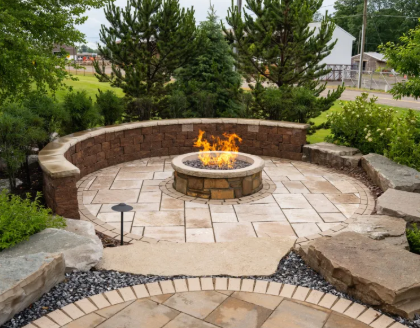Spending too much on pool care? Learn 6 smart tricks to keep your pool clean, safe, and low-maintenance.
Owning a pool is a luxury, but those skyrocketing maintenance bills? Not so luxurious. Have you ever wondered why keeping your pool sparkling clean costs so much when professionals handle it? The truth is, many pool maintenance tasks are straightforward enough for any homeowner to tackle with a little know-how. By adopting a few simple habits, you can keep your pool clean, safe, and inviting without breaking the bank. Here are six practical, hands-on tips to help you maintain your pool like a pro, saving you time, money, and stress while ensuring your backyard oasis stays in top shape.
Tip 1: Skim the Surface Daily
Nothing ruins a refreshing dip like leaves, bugs, or stray twigs floating on the water. Daily skimming is your first line of defense. Grab a hand skimmer or a long pole net and spend five minutes each morning gliding it across the surface to scoop up debris. This small effort keeps your pool looking pristine and prevents organic material from sinking to the bottom, where it can clog your filtration system or fuel algae growth. Skimming is quick, almost meditative, and saves you from more intensive cleaning later. Think of it as brushing your pool’s teeth—do it daily, and you’ll avoid bigger problems down the road.
Tip 2: Brush the Walls and Floor Weekly
Algae and dirt love to cling to your pool’s walls and floor, especially in areas with low water circulation like steps, corners, or behind ladders. Brushing these surfaces weekly stops buildup before it turns into stubborn stains or slimy patches. Use a pool brush designed for your pool’s material—nylon bristles for vinyl or fiberglass, stainless steel for concrete. Focus on trouble spots, applying firm but gentle pressure to dislodge grime. This task takes about 15-20 minutes depending on your pool’s size, and it’s a workout that pays off in crystal-clear water. Pair brushing with a good vacuum session every couple of weeks for even better results.
Tip 3: Test and Balance Water Chemistry
Clear water isn’t just about looks—it’s about safety and equipment longevity. Testing and balancing your pool’s water chemistry is a must, but it’s easier than it sounds. Invest in a reliable home test kit (strips or liquid kits work well) to measure pH, chlorine, and alkalinity levels at least twice a week. Aim for a pH between 7.2 and 7.6—too low, and your pool becomes corrosive; too high, and chlorine loses its sanitizing power. Chlorine should typically sit between 1-3 ppm, and total alkalinity between 80-120 ppm. If levels are off, use pool-safe chemicals like sodium bicarbonate to raise alkalinity or muriatic acid to lower pH, following product instructions carefully. Balanced water keeps swimmers’ skin and eyes comfortable and protects your pool’s pipes and pump from damage. Keep a log of your readings to spot trends and adjust proactively.
Tip 4: Clean the Filter Regularly
Your pool’s filter is its unsung hero, trapping dirt and keeping water clear. But a clogged filter is like a choked engine—it slows circulation and clouds your water. Whether you have a sand, cartridge, or diatomaceous earth (DE) filter, check it monthly and clean it when needed. For cartridge filters, remove and rinse thoroughly with a garden hose until water runs clear. Sand filters require backwashing—reversing water flow to flush out debris—when the pressure gauge reads 8-10 psi above normal. DE filters need occasional backwashing and fresh DE powder added. A clean filter ensures efficient water flow, reducing strain on your pump and cutting down on chemical use. Mark your calendar to inspect your filter regularly, especially after heavy pool use or storms.
Tip 5: Watch the Water Level
It’s easy to overlook, but your pool’s water level matters more than you might think. The ideal level is halfway up the skimmer opening. Too low, and your pump could suck in air, causing damage; too high, and the skimmer can’t catch debris effectively. Check the level weekly, especially after heavy rain, hot weather, or lots of splashing kids. To top up, use a garden hose, but add water slowly to avoid shocking the chemistry. After rain, you may need to drain excess water using your pump’s waste setting. Keeping the water level in check ensures your skimmer and pump work efficiently, saving you from costly repairs and murky water.
Tip 6: Use a Pool Cover
A pool cover is your secret weapon for low-effort maintenance. It blocks leaves, dirt, and bugs, cuts down on water evaporation, and helps retain heat and chemicals. If you’re not using the pool for a few days or during cooler nights, toss on a cover. Solar covers can even warm the water, extending your swimming season. While covers require an upfront cost, they save money over time by reducing the need for water top-ups, chemicals, and cleaning. Choose a cover that fits your pool snugly, and clean it occasionally to prevent mold. This simple step can shave hours off your maintenance routine and keep your pool ready for a spontaneous swim.
Conclusion
Pool maintenance doesn’t have to mean expensive service calls or endless frustration. By incorporating these six tips—daily skimming, weekly brushing, regular water testing, filter cleaning, water level checks, and using a cover—you can take control of your pool’s upkeep with confidence. These habits are simple, cost-effective, and deliver a cleaner, safer swimming experience. Ditch the stress of outsourcing and embrace the satisfaction of a well-maintained pool. With a little consistency, your backyard oasis will stay inviting all season long, leaving you more time to enjoy the water instead of worrying about it.





